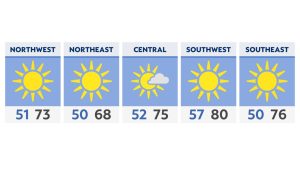Back in 2010, FIFA chose Qatar to host the 2022 World Cup. The decision received significant criticism, and among those critiques, hosting the world’s biggest soccer tournament in the desert during the heat of summer was one of the big ones.
How to solve that? Host it in the winter. But the warmth even in the winter months in the Middle East can test some of the world’s best athletes.
This year’s FIFA World Cup kicked off in Nov. 2022, and will conclude on Dec. 18 in Lusail, Qatar, just north of Doha. It’s the first time countries have competed in the World Cup outside the months of May, June or July.
Part of Qatar’s World Cup bid to FIFA was to host the tournament during the winter months, since the heat is so intense in the Middle Eastern desert during the summer, when FIFA traditionally holds the World Cup.
Since the U.S. last hosted the World Cup in 1994, host countries have had much more conducive weather during the summer months for playing soccer outdoors, without the extreme heat or humidity.
Organizers usually spread World Cup games across the host country throughout the tournament, so the weather can vary.
Looking at the annual temperatures in Doha, Qatar, where most of the stadiums are, you can tell that playing in the summer just isn’t feasible.
Average high temperatures during the summer months exceed 100 degrees, and overnight lows barely drop below 90.
Playing in November and December is still relatively warm compared to other World Cups, but without the oppressive heat and humidity during the summer months.
To help curb any potential for heat exhaustion or illness, seven of the eight outdoor World Cup stadiums in Qatar are fitted with energy-efficient cooling systems, similar to air conditioning.
According to FIFA, the solar powered technology cools outside air and distributes it through grills in the stands and large pitch-side nozzles. It spot-cools the stadium where it’s needed most, for the players and the fans.
FIFA will hold the next World Cup in 2026 in North America across Canada, the U.S. and Mexico. Some of the host cities, like Miami, will certainly offer a hot and humid playing environment during the summer, but won’t come close in comparison to a typical summer in Qatar.
Our team of meteorologists dives deep into the science of weather and breaks down timely weather data and information. To view more weather and climate stories, check out our weather blogs section.




